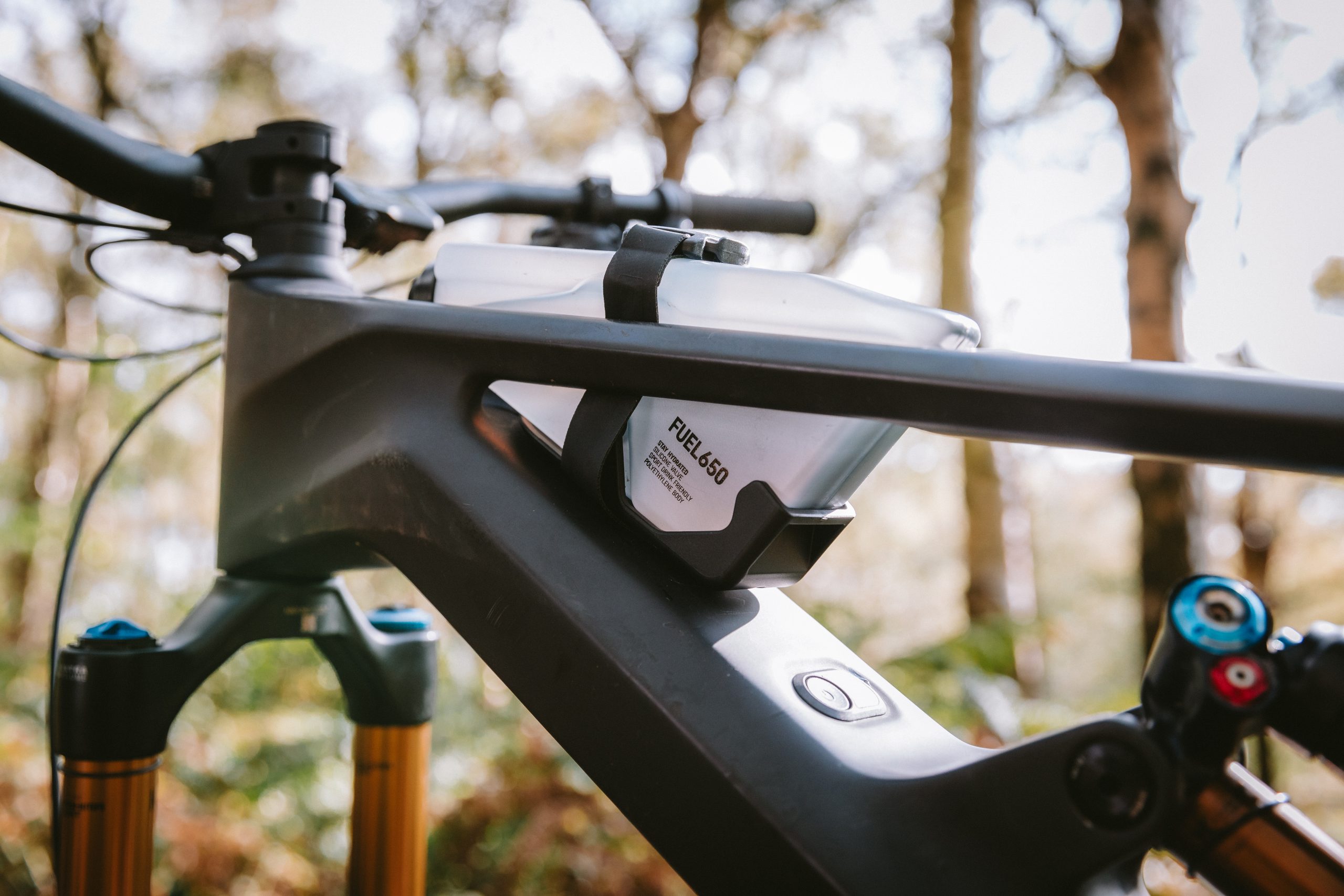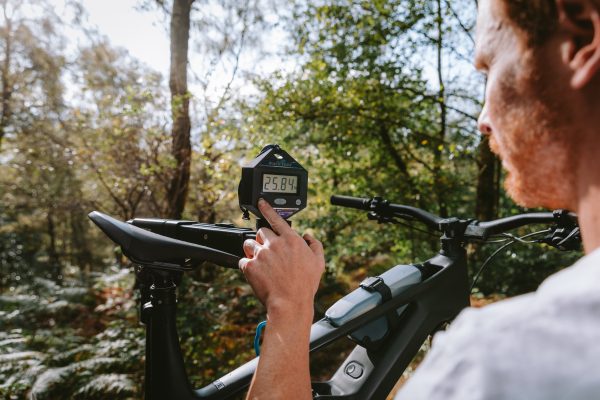Are heavier bikes harder, slower and more tiring to ride? Time to modify an e-bike in a quest to find out
A lighter bike rides better than a heavy one, right? It’s an idea most of us have agreed with over the years because, simply put, we know it to be true. Our own experience has shown us that a lighter bike climbs more easily, all other things being equal. Lighter bikes handle better, jump further and are generally more fun.
And then something happened that blew that thinking right out of the water. We got e-bikes. Suddenly the best electric mountain bikes being produced weighed more than 20kg, half as much again as a similarly specced regular bike with the same travel.

Early days: the 2016 KTM Macina Lycan pushed out 250W, weighed a scant 21kg but the geometry and ride feel were appalling
And yes, some of them rode like a sack of spuds, particularly the early ones like the Giant Full E+ 1 from 2016, and there were plenty of mistakes and growing pains: But today’s e-bikes are some of the best riding bikes we’ve ever tested, and that includes analogue bikes too.
So what on earth is going on? If weight matters so much, why don’t e-bikes absolutely suck when you’re going downhill? (You might even think they do, but that’s a different story.)
My theory is that it’s as much about where weight sits on a bike and how the suspension and geometry is built around it, as the weight itself. In an effort to find out, I’ve run a cunning back to back test to find out whether adding or subtracting weight to a bike really does make a difference to the ride feel.

You and the bike work as one when loading the bike into a corner… but less so when things get loose and the bike moves underneath you
Myth busting
Before we get there though there are a few myths that need to be sorted out once and for all. We’ve heard it said that a bike’s weight is largely irrelevant because we have to take the bike and rider weight together as a system. Start with an 80kg rider and it doesn’t make much difference to the overall weight whether you add a 15kg bike or a 20kg bike, the theory goes.
I’d argue that’s true in some situations, and not in others. The principle works well in some corners, you use your weight to force grip through the tyres and by and large you and the bike are working as a single unit.
That idea starts to go wrong when you come out of the corner though, hammer over a rough section of trail or get on anything loose, slippery or off-camber. The best skills coaching, and indeed your own riding knowledge tells you to get loose and be ready to let the bike slide underneath you. Clearly this is a disconnect, and a bike’s weight matters hugely when this happens.

It’s easier to bunnyhop a lightweight bike than a heavy bike, a skill we all do hundreds of times each ride
Likewise, bunnyhopping a mountain bike requires you to pull the thing up into the air. It’s simple physics, on flat terrain if you want the bike airborne you have to jump first and pull it up after you. Yes you can load the tyres and suspension somewhat, but the most important factor is you dragging the thing skywards. If that wasn’t the case then BMXers with rock hard tyres and no suspension would find it impossible to bunnyhop.
To cut a long story short, a heavy bike is more weight to drag up into the air, a lighter bike is less weight. Which do you reckon will gain more height? We perform little bunnyhops all the time as we ride our bikes, and a lightweight bike definitely makes this easier.

The Canyon Torque:ON is a monster on the descents, and the perfect test mule thanks to its interchangeable battery sizes
Heavyweight champions
Heavy bikes do a lot of things better though. The suspension performance is superior because the ratio of sprung to unsprung mass is better. We’ve probably all heard this a million times, the unsprung mass is the wheels, fork lowers, the air can part of your shock that moves with the swingarm, and any associated fittings. The sprung mass is all the rest. Increase the sprung weight and keep the unsprung weight roughly the same (as on an e-bike) and your bike becomes a more stable platform for the suspension, letting the wheels maintain better contact with the trail and therefore generate more grip.

With 650ml of water and an extra 150Wh of battery, it’s simple to increase the Torque:ON’s weight by around 1,500g
Back to our weight test: the bikes
Obviously we need two bikes for this test, with exactly the same spec but different weights. Of course that’s impossible, two identical bikes will actually have slightly different weights thanks to vagaries of tyre weight, frame and components, and that’s before we even start talking about the distractions of lost efficiency or suspension performance.
So to remove all those variables we’ve gone with a single bike, the Canyon Torque:ON. This works because you can remove as much as 1.5kg of weight from the same bike simply by swapping battery size and removing the top-tube mounted water bottle. So no janky bolted on weight, and a test bike completely devoid of variables other than the weight itself… and of course me, the test rider.

Time to get testing: swapping between the heavy and lightweight setup on the Torque:ON showed weight does matter
The test
This is the Canyon Torque:ON we’re talking about, a motorised downhill bike, so I headed to the roughest and fastest track I could find. I wanted to let the bike rip and have fun doing it, but mostly I needed everything to be working as it should to try and feel the setup differences. The track had rocks and roots galore, off-camber sections and a couple of steep bits, but mostly we’re talking fast and rough.
I followed the classic ABBA testing pattern. That meant three runs on the heavy 900Wh battery with the water bottle in, followed by six on the lighter 750Wh battery and no bottle, before finally switching back to the heavyweight setting for a final three laps.

Side-by-side it’s clear the 900Wh battery will reach further up the downtube than the 750Wh… and that really makes a difference
What I found
Much to my surprise I did feel an instant difference when adding 1.5kg to the weight of the bike. As a percentage of the bike’s weight it’s pretty small, we’re talking about adding on just 6% more heft, which doesn’t sound like much. But the bike felt slightly less willing to leave the ground, but generated marginally more grip and stability. I doubt this effect would have been noticeable without the back-to-back testing, and my point is the difference was very small indeed.

Changing batteries meant adjusting fork, and correspondingly the shock pressure too
More importantly though, the balance of the bike had shifted dramatically. The fork felt more sucked down and ran deeper into its travel, and correspondingly the back end was less planted. I found myself more off the back of the bike to compensate. I’d added the extra weight forward of the BB and pretty high on the frame, which could well be the principal factor affecting the outcome of this test.
My plan had been to ride without touching the suspension settings at all, but I had to add 8psi more air to the fork after the first run to balance the bike out again.

Removing 1.5kg of weight high on the bike did have an effect on the handling, but the key is to adjust your suspension accordingly
Weight matters
So, there’s definitive proof! Well, sort of. I’m thinking that weight really does matter on a mountain bike, but it’s more about where you place that weight. The big battery sits just as low as the smaller 750wh power pack, but it stretches considerably higher up the downtube. At least it does on the Canyon Torque:ON.
Combined with the high-position water bottle it produced a long moment arm and that applied more turning force on the bike. And bingo, the fork compressed more and messed up the setup on the bike. I’m guessing, but I doubt the 1.5kg weight difference could have been felt if placed right at the bike’s centre of gravity, somewhere close to the BB shell.
Right, I’m off to wrap some lead sheeting to my downtube, remove the valve caps from my wheels and fill the tyres with hydrogen.




